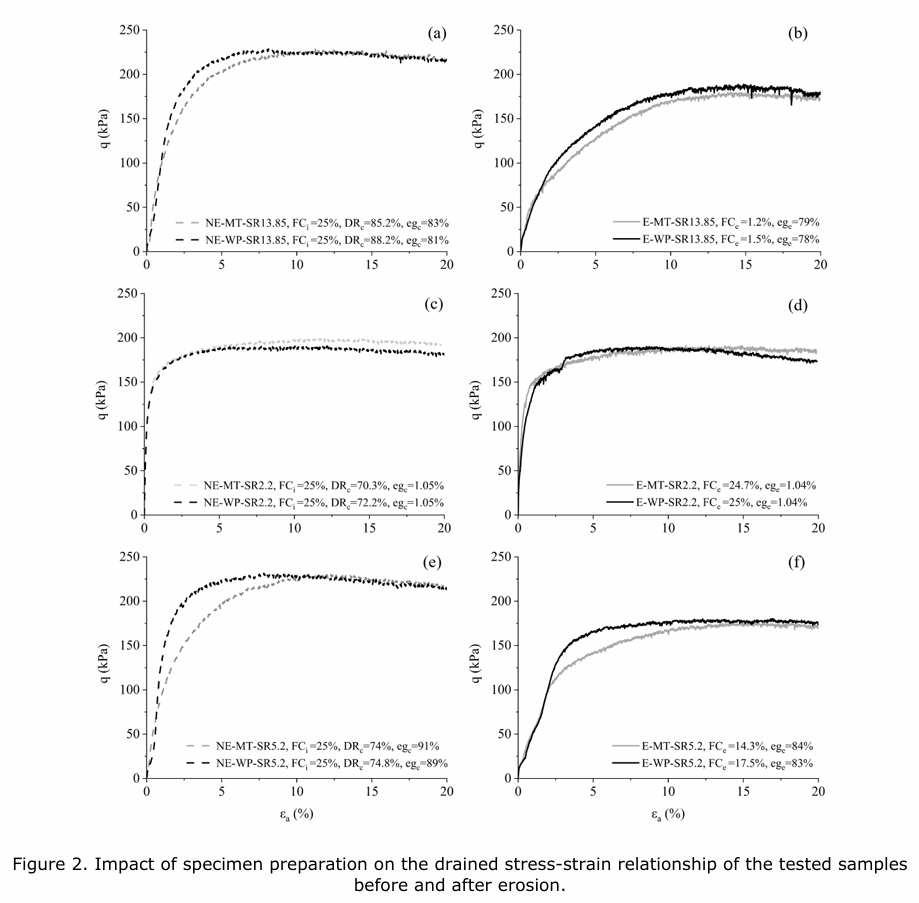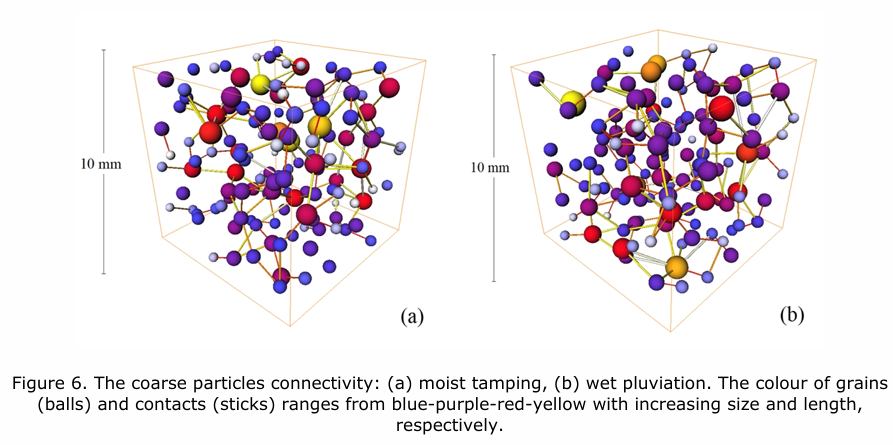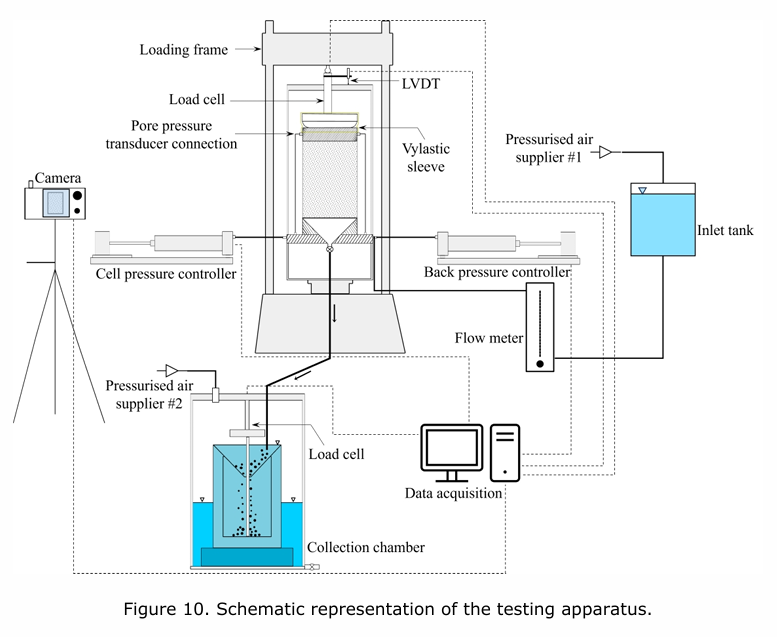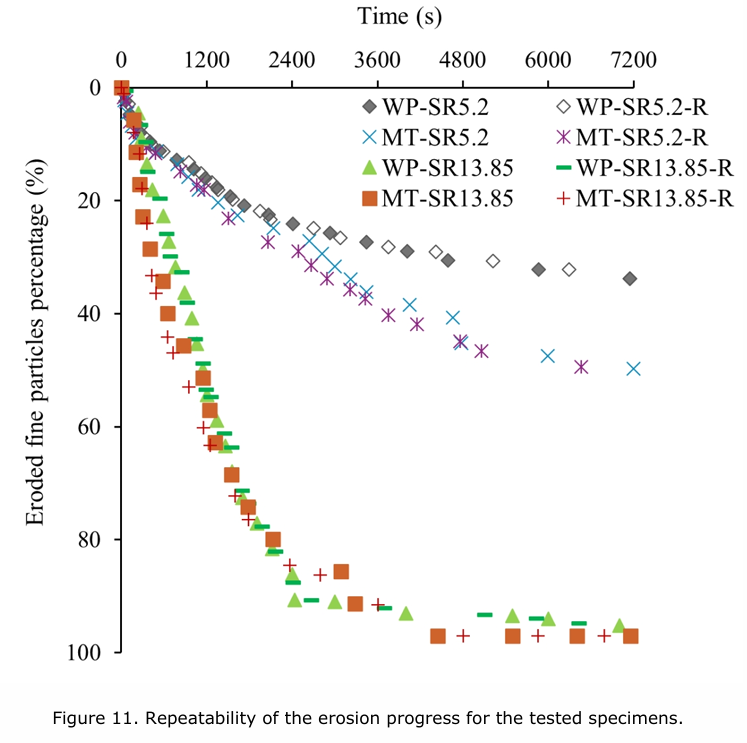Geotechnical Engineering Academic JournalStudy notes on the online publication of Can. Geotech. J.
It is recommended to read the original text before looking at the translation for better learning outcomes.
Links to previous notes and this journal article are at the end of the document.
Title:
Impact of Sample Preparation on Erosion Characteristics and Subsequent Mechanical Behaviour of Gap-Graded Soils: An Imaging-Based Analysis
Published online:
May 2, 2025
Resource:
https://doi.org/10.1139/cgj-2024-0759
Authors:
-Meysam MousaviDepartment of Infrastructure Engineering, The University of Melbourne, VIC 3010, Australia
-Mahdi M. DisfaniDepartment of Infrastructure Engineering, The University of Melbourne, VIC 3010, Australia
-Jay R. BlackSchool of Geography, Earth and Atmospheric Sciences, The University of Melbourne, VIC 3010, AustraliaTrace Analysis for Chemical, Earth and Environmental Sciences (TrACEES) Platform, The University of Melbourne, VIC 3010, Australia
-Amirhassan MehdizadehDepartment of Infrastructure Engineering, The University of Melbourne, VIC 3010, Australia
Abstract:
This study investigated the influence of sample preparation methods, moist tamping and wet pluviation, on the erodibility and mechanical behaviour of gap-graded soils with three gradations: fully stable, unstable, and on the borderline of stability. Drained triaxial tests were performed using a modified erosion-triaxial apparatus, followed by micro-CT scanning to assess pore network properties. The results indicated that for fully stable and fully unstable samples, the preparation method had minimal impact on both erosion and mechanical behaviour. However, for the samples on the borderline of stability, the wet pluviation method resulted in fine particle segregation, creating a heterogeneous structure with reduced pore connectivity. This led to lower erosion rates (0.4 gr/min reduction compared to the moist tamping technique), but mechanical properties remained largely unaffected, as confirmed by similar intergranular void ratios and stress-strain responses. Micro-CT scanning quantified differences in pore structure, showing that wet pluviation samples exhibited lower connected porosity compared to those prepared by moist tamping. These findings highlight the critical role of specimen preparation in assessing suffusion susceptibility and erosion behaviour, particularly for soils near the threshold of instability.
Keywords:
Internal erosion; Specimen preparation; Mechanical behaviour; Soil heterogeneity






——-Boundary Line——-
Title:
Impact of Sample Preparation on Erosion Characteristics and Subsequent Mechanical Behaviour of Gap-Graded Soils
Published online:
May 2, 2025
Resource:
https://doi.org/10.1139/cgj-2024-0759
Authors:
-Meysam MousaviDepartment of Infrastructure Engineering, The University of Melbourne, VIC 3010, Australia
-Mahdi M. DisfaniDepartment of Infrastructure Engineering, The University of Melbourne, VIC 3010, Australia
-Jay R. BlackSchool of Geography, Earth and Atmospheric Sciences, The University of Melbourne, VIC 3010, AustraliaTrace Analysis for Chemical, Earth and Environmental Sciences (TrACEES) Platform, The University of Melbourne, VIC 3010, Australia
-Amirhassan MehdizadehDepartment of Infrastructure Engineering, The University of Melbourne, VIC 3010, Australia
Abstract:
This study investigated the influence of sample preparation methods, moist tamping and wet pluviation, on the erodibility and mechanical behaviour of gap-graded soils with three gradations: fully stable, unstable, and on the borderline of stability. Drained triaxial tests were performed using a modified erosion-triaxial apparatus, followed by micro-CT scanning to assess pore network properties. The results indicated that for fully stable and fully unstable samples, the preparation method had minimal impact on both erosion and mechanical behaviour. However, for the samples on the borderline of stability, the wet pluviation method resulted in fine particle segregation, creating a heterogeneous structure with reduced pore connectivity. This led to lower erosion rates (0.4 gr/min reduction compared to the moist tamping technique), but mechanical properties remained largely unaffected, as confirmed by similar intergranular void ratios and stress-strain responses. Micro-CT scanning quantified differences in pore structure, showing that wet pluviation samples exhibited lower connected porosity compared to those prepared by moist tamping. These findings highlight the critical role of specimen preparation in assessing suffusion susceptibility and erosion behaviour, particularly for soils near the threshold of instability.
Keywords:
Internal erosion; Specimen preparation; Mechanical behaviour; Soil heterogeneity
See previous notes in the collection below, and please point out any inaccuracies.
Feel free to like, comment, and share with classmates who may need it.
Click to read the original text and jump to the journal link; for the complete original text, please follow and leave a message on the public account homepage.
👆Follow Geotechnical Engineering Academic Frontiers